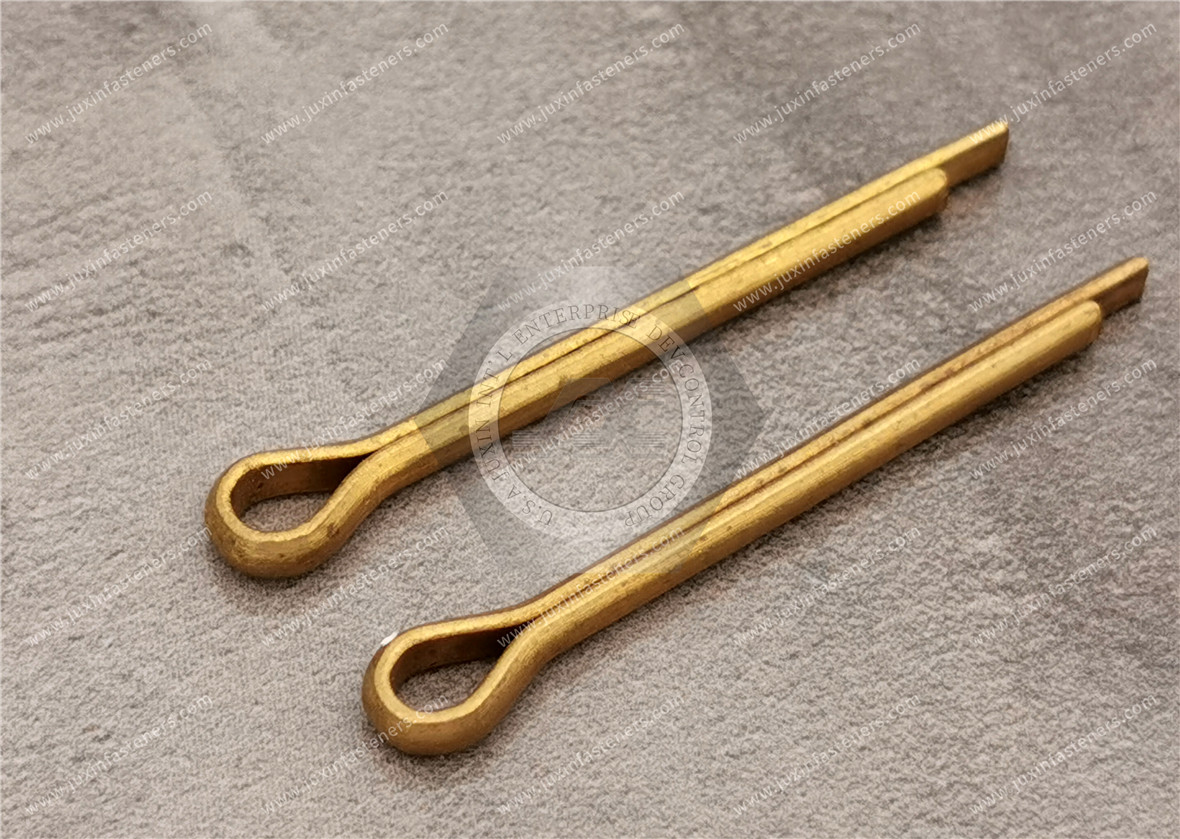Call Us
+86 136 6007 9809
Call Us
+86 136 6007 9809
Material: Brass
Standard: DIN 94, DIN EN ISO 1234, Q 500, ISO 1234, ANSI/ASME B 18.8.1, ANSI/ASME B 18.8.6M, NF E 25-774, UNI 1336.Cotter pin assembly
1. Insert the cotter pin into the cylinder pin by hand or pliers. Do not insert the cotter pin with a hammer.
2. Use a screwdriver to remove the latch.
3. In principle, the angle of the pin should be 60 degrees. The hole pin can be rolled up when touching the workpiece.
4. When opening the hole, be careful to make the partitions straight and symmetrical. Symmetrical. Length irregularities with an R-shape and upper square are not allowed.
5. When fixing the slotted nut, the opening degree of the opening pin is 60° in principle, and rotate it a few turns appropriately. However, the connector should be rolled up when there is insufficient blocking or insulating distance from the surrounding area.
Product Specification
1. Cotter pin is a kind of metal hardware, commonly known as spring pin, or safety pin, commonly used high-quality steel, good elasticity of the material made.
2. Standard range of nominal specifications for 0.6 ~ 20mm
3. cotter pin material: carbon steel, copper alloy, stainless steel
4. Characteristics: Each foot of the cotter pin can withstand repeated bending and no breakage or crack in the bending portion.
5. inferior cotter pins: cotter pins surface burrs, irregular shape, and harmful defects.
Role of cotter pins:
1. Cotter pins and closed-end pins are generally used on the bolts of all kinds of fixtures and mainly play the role of limiting.
2. Advantage: Cotter pins are applicable to many fixtures, with large application areas, and are easy to use.
3. Disadvantages: easy to loosen, ordinary cotter pins are easy to corrode.
Standard range nominal size 0.6~20mm, cotter pins material: carbon steel, copper alloy, stainless steel, characteristics: cotter pins each foot can withstand repeated multiple bending, and in the bending part does not break or crack. Substandard cotter pins: cotter pins have burrs, irregular shapes, and harmful defects on the surface.The role of cotter pins: cotter pins, and closed pins are generally used in various types of fixtures on the bolt and mainly play a role in limiting. Advantages: closed-end pins are applicable to a lot of fixtures, applicable to a large surface, and easy to use. Disadvantages: easy to loosen, ordinary cotter pins are easy to corrode. w-type and r-type type difference: w-type locking pins are generally used on disk insulators, and r-type locking pins are generally used on insulators.
Product Packaging
Packaging: The inner packaging is a plastic bag, and the outer packaging is a carton. Then the tray. Carton size: 29*19*19.5CM and 23.5*17.5*8CM and pallet size: 215*100*90CM, or as your request.
Product Pictures

Contact Us
Tel.:
+86 020 8621 0320
+86 020 3121 6067
Technical Support:
Navigation
SEND INQUIREY